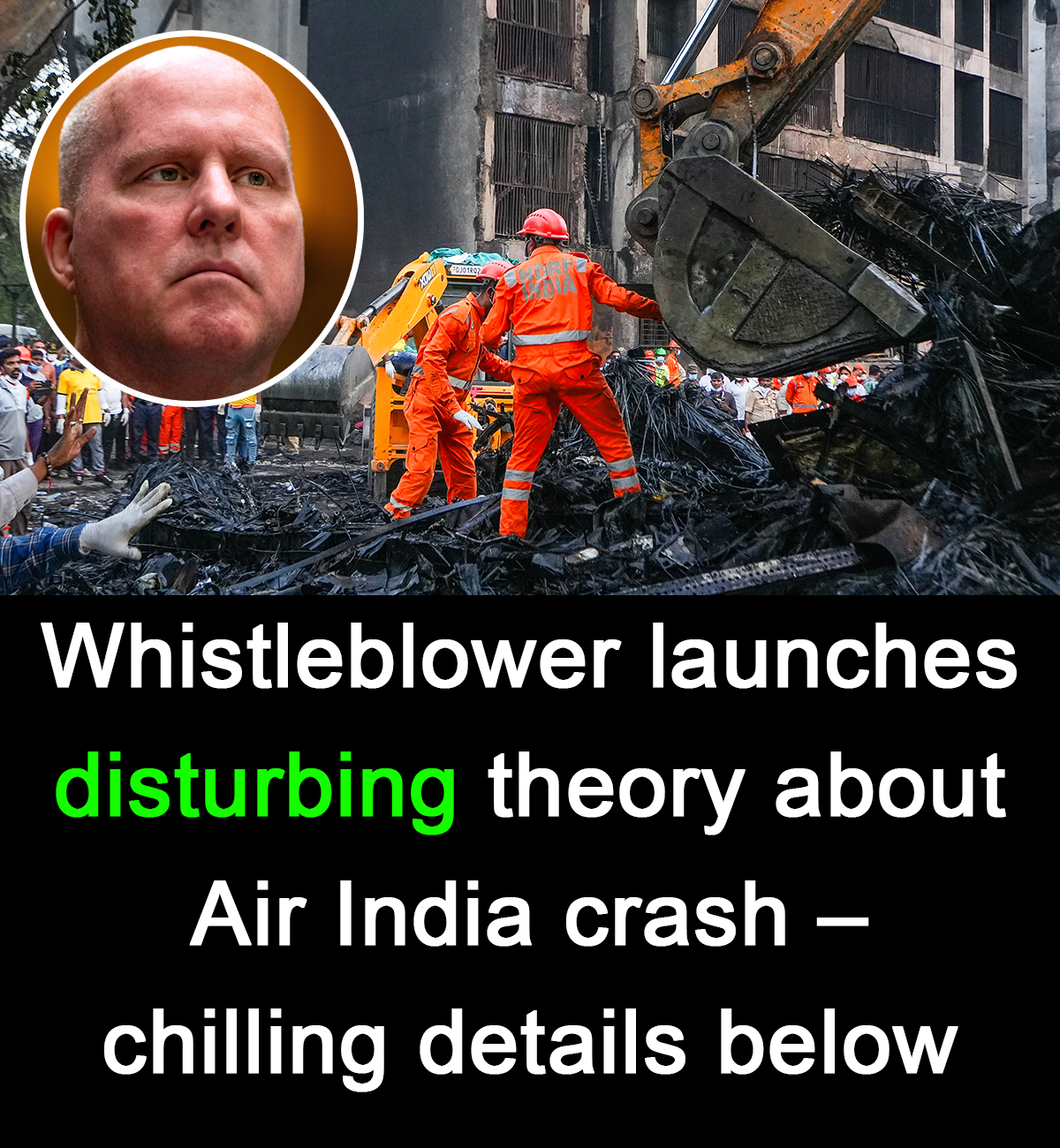The tragic crash of Air India flight AI171, a Boeing 787-8 Dreamliner, last week in Ahmedabad, India, has left the aviation community and the world in shock. The accident, which claimed the lives of nearly 270 people, including 242 passengers and crew, has sparked a range of theories and concerns. One of the most notable voices in the ongoing investigation is Ed Pierson, a former Boeing manager turned whistleblower, who has raised serious questions about the safety of Boeing’s manufacturing process and its potential connection to the crash.
The Air India Crash Incident
The Boeing 787-8, which crashed shortly after takeoff from Ahmedabad, was en route to London Gatwick. The aircraft’s crash occurred in a residential area near BJ Medical College, where it came to a stop in the dining room where medical students were eating lunch. Of the 242 people on board, 169 were Indian nationals, with the remaining passengers from the UK, Canada, and Portugal. Only one passenger survived, and the investigation has been focusing on various potential causes, including engine failure, issues with the wing flaps, and landing gear problems.
The crash has triggered a thorough investigation, led by experts from India, the UK, and the US. In addition to collecting black box data and cockpit recordings, aviation experts are closely examining radar data and visual footage from the crash. One theory, proposed by Dr. Sonya Brown, suggests that the aircraft experienced a significant loss of thrust, leading to a stall shortly after takeoff. Brown noted that radar data indicated the plane was losing speed in the initial climb, a key factor that could lead to a stall.
Boeing Whistleblower’s Allegations
Ed Pierson, a former Boeing manager who became a whistleblower after raising concerns about the company’s manufacturing practices, has publicly stated that chaotic and dangerous manufacturing could have played a role in the crash. Pierson had previously testified before Congress in 2019, revealing several safety issues at Boeing. He claimed that staff were often forced to work excessive hours, sometimes leading to rushed and unsafe practices in aircraft assembly. In his interview with NDTV, Pierson highlighted issues such as parts not fitting together properly, which he described as a serious safety concern.
 Ed Pierson (left). Credit: Getty Images
Ed Pierson (left). Credit: Getty Images
“The whole process was chaotic,” Pierson explained. “We were rushing to build planes… employees were under pressure to do overtime… parts issues, system issues, and, particularly, electrical system testing problems were common.”
Pierson’s concerns were not isolated. He noted that there were multiple instances where Boeing employees had reported difficulties with aircraft systems and quality control, as well as issues with parts and electrical systems that were never fully addressed.
“It was a dangerous environment. I was deeply concerned about the risks we were taking,” Pierson continued. “Unfortunately, many of these issues were swept under the rug, and I don’t believe they were addressed in a timely manner.”
Pierson, who now advocates for aviation safety through the Foundation of Aviation Safety, stated that these patterns of issues were not limited to the 787 model but were seen in other Boeing aircraft as well. He emphasized that such concerns should be investigated thoroughly, not just in relation to the 787 but across all Boeing planes.
The Uncertainty Surrounding the Cause
Despite Pierson’s allegations and the ongoing investigation, he stressed that it is too early to jump to conclusions about the exact cause of the crash. The data from the black box, which has been recovered, is currently being analyzed, and Pierson acknowledged that much remains unknown.
“One of the things that really stood out to me was the report from a passenger who had flown a couple of hours before the crash. They mentioned that none of the aircraft systems were working, including the air-conditioning,” Pierson said. “These systems should always be functional because there are backup systems. This issue is concerning, and it needs to be looked into.”
Pierson emphasized the importance of waiting for the final analysis of the flight data recorder before jumping to conclusions about what caused the accident. “Until we get the full information, we can’t make definitive statements. There is still so much we don’t know,” he said.
Boeing’s Response and Public Concern
Boeing, the manufacturer of the aircraft, has faced public scrutiny over the years for various safety concerns. The company has denied Pierson’s claims, stating that they adhere to strict safety and quality standards in the manufacturing process. However, Pierson’s allegations are adding fuel to an already volatile situation, with growing concerns about Boeing’s commitment to addressing these issues in a timely and effective manner.
While the investigation continues, Pierson’s concerns highlight the need for a broader reevaluation of Boeing’s manufacturing processes and safety protocols. The aviation industry, particularly in the wake of several high-profile accidents involving Boeing aircraft, is under increasing pressure to ensure the safety and reliability of their planes.
Thoughts for the Victims and Their Families
As the investigation into the Air India crash continues, all eyes are on the findings that will ultimately determine what caused this devastating tragedy. For now, the focus remains on understanding the circumstances that led to the loss of so many innocent lives. The efforts of investigators and the testimony of experts like Pierson will play a crucial role in uncovering the truth and ensuring that such a tragedy is prevented in the future.
In the meantime, the world’s thoughts are with the victims of the crash, their families, and the sole survivor. This incident serves as a reminder of the importance of safety in aviation and the need for continued vigilance and accountability in the industry.
For further reading, explore these additional articles:
- Full Story: Man Loses 360 Pounds Naturally, Internet Rallies to Support His Next Step
- Tammy Hembrow’s Bikini Photos Are Stirring Controversy: Here’s Why Everyone’s Talking
- The Hidden Meaning Behind Princess Diana’s Cannes Gown: A Heartfelt Farewell to Grace Kelly
- Science Confirms Kelly Brook’s Perfect Body, But the Real Message Is Bigger Than Beauty
This article provides a detailed account of Ed Pierson’s whistleblower testimony, the ongoing investigation, and the broader implications for Boeing’s manufacturing practices. As more information emerges, the aviation industry must confront its safety practices to ensure such tragedies are avoided in the future.


